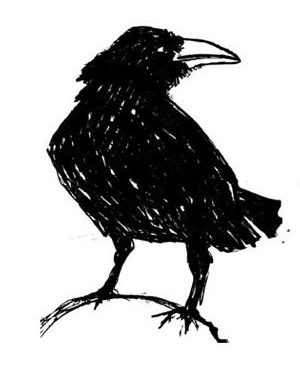A new canvas is always an adventure waiting to happen.
Some people carefully plan their work, laying out the composition, setting out colours that have secondary and complimentary contrasts, list the qualities which they are going to use to portray their subject.
Not me – or so I thought.
Now I realise that my jump in and splash paint is almost always preceded by “being stuck”: staring at the blank canvas. The being stuck are cogitations that are occurring in my “back-brain” that don’t tell the front brain what is cooking.
I long ago discovered that I work best by disconnecting the front office in my head. It is the one that wants rational answers, layouts, timetables, and basically over thinks the whole process. It turns out that my hand and eye have a blissful co-operation that has nothing to do with the conscious task master of the front office brain. In short, if I stop thinking, I can paint. (This is where the right music comes in to free the savage mind and all.)
The thinking comes before hand, musing over stories and people and events that shape my life. The main intellectual thinking that occurs for my painting is finding the time to shut the door, chase everyone away, lay out the paints and go!
But, – there is a whole lot of emotional thinking going on. I have often heard the remark about my work, that it is the emotional content that gives it the power to arrest one’s attention. And, yes, all my work has as its foundation, an emotional basis; be it fragile trilliums in a darkling wood, or weird and wild creatures flailing in the acid rain, what I paint is what I feel about the subject.
Never the less, over the years I have observed some basic processes that shorten the preparatory time.
Number one is to under paint the piece with a colour that represents how I am feeling about the subject. Forget the subject, just how I am feeling.
The second process is to use chalk pastel to create a very basic composition.
This will be lines dividing the canvas or paper into sections. The ones that please me stay, the others get wiped off with a wet cloth. Next I lay out my eight colours. Two yellows, a bright and an ochre or “redder” yellow; two blues, Thalo, my favourite, and ultramarine, and two reds, a crimson and a scarlet. Add to that white and dark umber and I’m set.
When I was a child painting, I often had little money for good paints. I learned early to work from the primaries and these days have a hard time using premixed paints, unless they are in the umbers and ochres.
I have found that burnt umber is not really necessary either because the absolutely right mix of thalo blue and scarlet will create a pigment that is darker than either one, being almost black in tone.
From this point on is what I think of as the flailing time. I launch my paint on the canvas enjoying the mix of colour and shapes; laying out the main structure of the image and letting it talk back to me. I paint intuitively at this point, letting too many decades of painting guide my hand with out intervention.
At some point, I gain a forward momentum, the whole take on cohesion and it is time to sit back and stare. Make some tea, take the dog for a walk, read the mail or something other than paint. An hour or so later, I come back and contemplate the work in progress.
Often at this point I will start another painting or go back to one already started. One idea begets another and instead of painting many images on the same canvas, I have learned to start a second and third and fourth, if need be, at the same time.
Each piece needs to “soak” to sit and be left alone long enough that when I come back, I have some objectivity about it.
From this point, I start defining what I have already put down, often using chalk pastel to try out ideas and then wash the lines off if they don’t suit. (I love acrylics and their relatively quick drying ness.) This is the point where tonal values become very important.
The range between lightest usually white and darkest, almost black; will create the depth and “realness” of what ever I am painting. They tone down one area, make another more interesting, create or enhance the line of flight taken by the eye, bring definition out of chaos.
What follows then is a series of advances and retreats as the image becomes more defined and then is left to soak and then more defined and left to soak. Sometimes this is only once. Sometime, especially with a big canvas or where I am not sure before I start what it is that is struggling to come out, this process occurs many times. At some point there is an “ahah!” From there on the process is about finishing the work. Outlines and curved lines are cleaned and smoothed, defined, textures textifyed, the whites of the eyes defined etc. This is the point that experience has taught me that too little is better than too much. If it’s right, leave it alone! Don’t rework it or you will have two paintings on one canvas again.
I prefer to leave a piece of work to sit for a week to see if it needs any thing more before I consider it finished. Thus the term “first finished” as opposed to “last finished” or really and truly finished.
From there I can play with framing.
